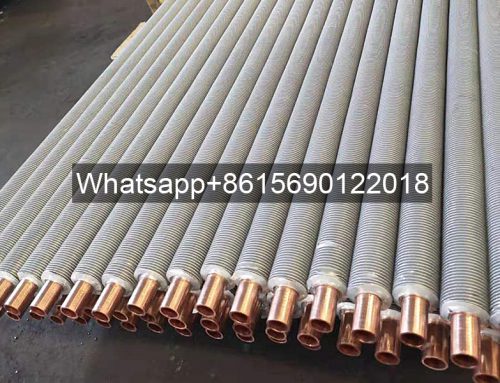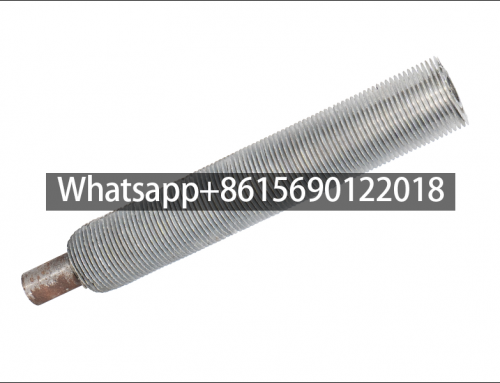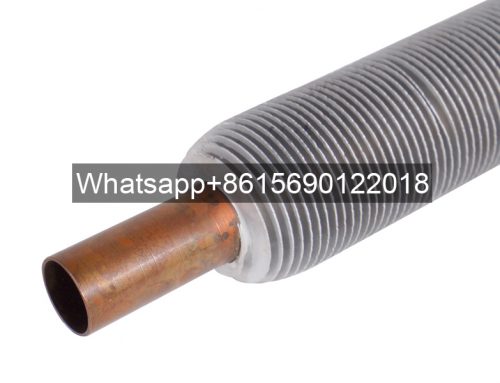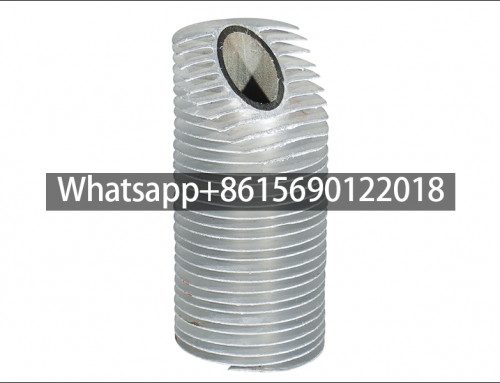Project Description

- Leave Your Message
Aluminum extruded finned tubes for waste heat recovery system in chemical plants
1. Project background and requirements
The high-temperature flue gas waste heat boiler of the sulfuric acid production unit of the chemical plant needs to achieve efficient waste heat recovery in a highly corrosive environment (containing sulfuric acid mist, SO₃ and other media). Traditional carbon steel finned tubes are easily corroded and have insufficient heat exchange efficiency, requiring a solution that combines corrosion resistance with high heat conduction performance.
2. Finned tube group structure design
Base tube material: 304 stainless steel (outer diameter 25.4mm, wall thickness 2.5mm, single tube length 3m), using seamless tube technology to ensure pressure strength (can withstand internal pressure above 10MPa).
Fin configuration: aluminum extruded fins (sheet height 10mm, sheet spacing 3mm), tightly combined with the base tube through cold rolling process, with contact thermal resistance less than 0.01m²·K/W, significantly improving heat conduction efficiency.
Tube group layout: 30 finned tubes are arranged in staggered rows, with a total heat exchange area of 450m² (6-8 times higher than that of bare tubes), the flue gas flow cross-sectional area is optimized to 0.8m², and the flow rate is controlled at 8-12m/s to balance the pressure drop and heat exchange efficiency.
3. Performance advantages and core breakthroughs
Corrosion resistance: The annual corrosion rate of 304 stainless steel base tubes in sulfuric acid dew point corrosion environment (pH=1-2, temperature 150-250℃) is <0.05mm, and the service life is extended to more than 10 years; the oxide film on the surface of the aluminum fins further resists acid gas erosion.
Heat exchange efficiency: The thermal conductivity of the aluminum fins reaches 237W/(m·K). With the efficient heat conduction of the base tube, the overall heat transfer coefficient of the system is increased to 65W/(m²·K), and the waste heat recovery rate is increased from 55% to 78%, with an annual energy saving equivalent to 1,200 tons of standard coal.
Dust accumulation resistance : The serrated fin design enhances airflow disturbance, reduces dust deposition, and extends the cleaning cycle from 7 days to 30 days .
4. Application effect and economy
Operation data : The flue gas inlet temperature drops from 380℃ to 140℃, 12GJ of heat is recovered per hour, the annual power generation increases by 8.5 million kWh, and the direct economic benefits exceed 5 million yuan .
Maintenance cost : The maintenance frequency drops from once a quarter to once a year, and the maintenance cost is reduced by 60% .
5. Key technical details
Composite process : High-frequency induction welding + aluminum extrusion molding technology is used, and the root of the fin is combined with the base tube, with a strength of >200MPa to avoid interface peeling caused by thermal stress .
Flow field optimization : CFD simulation shows that the turbulence intensity between the fins is increased by 30%, the boundary layer thickness is reduced by 40%, and the convective heat transfer effect is enhanced .
6. Industry promotion value
This case provides a standardized solution for waste heat recovery in highly corrosive chemical processes such as sulfuric acid, phosphate fertilizer, and titanium dioxide, which can be replicated in similar working conditions. The steel-aluminum composite structure achieves a balance between cost (35% lower than the pure stainless steel solution) and performance, becoming a benchmark technology for green upgrades of chemical equipment.





